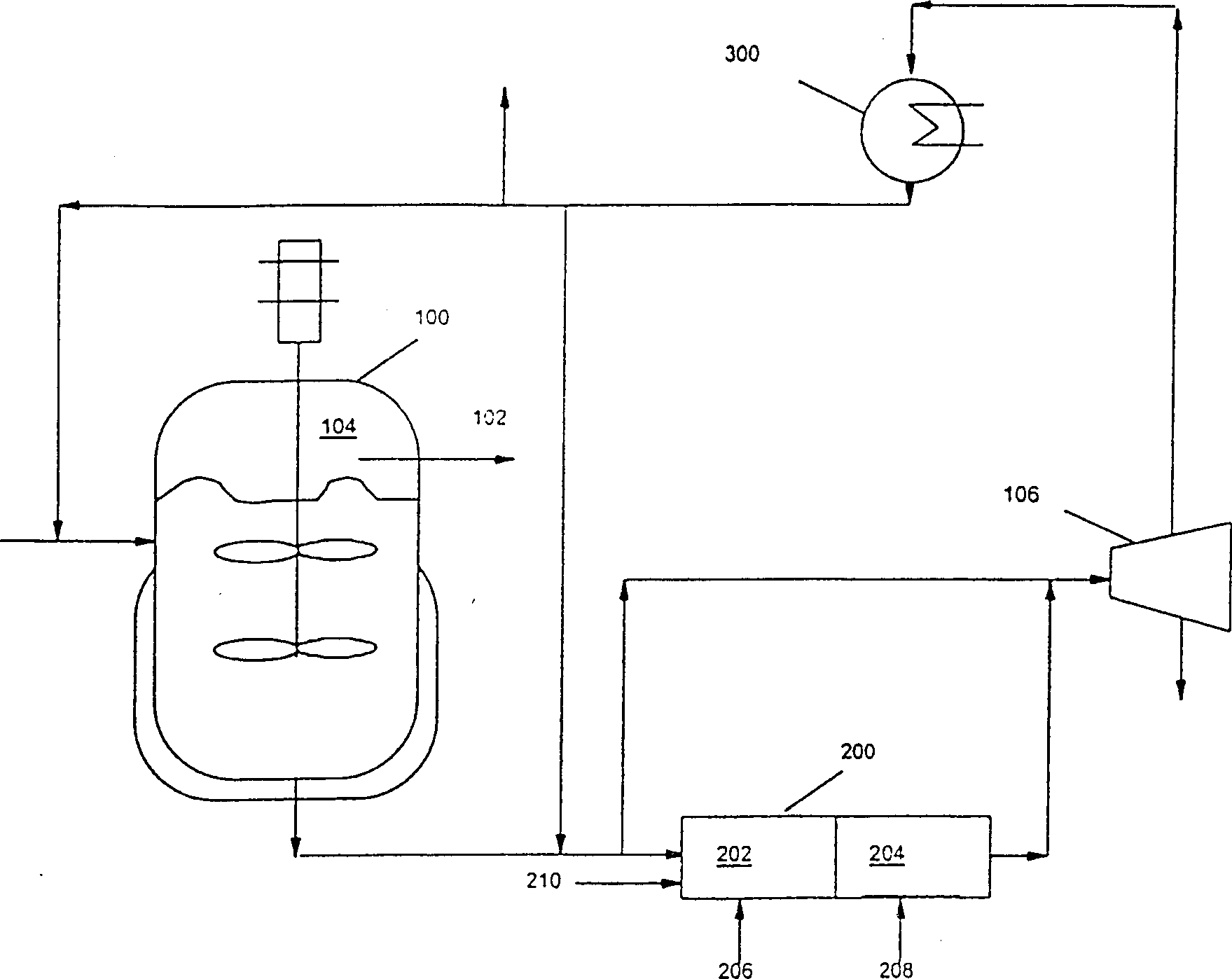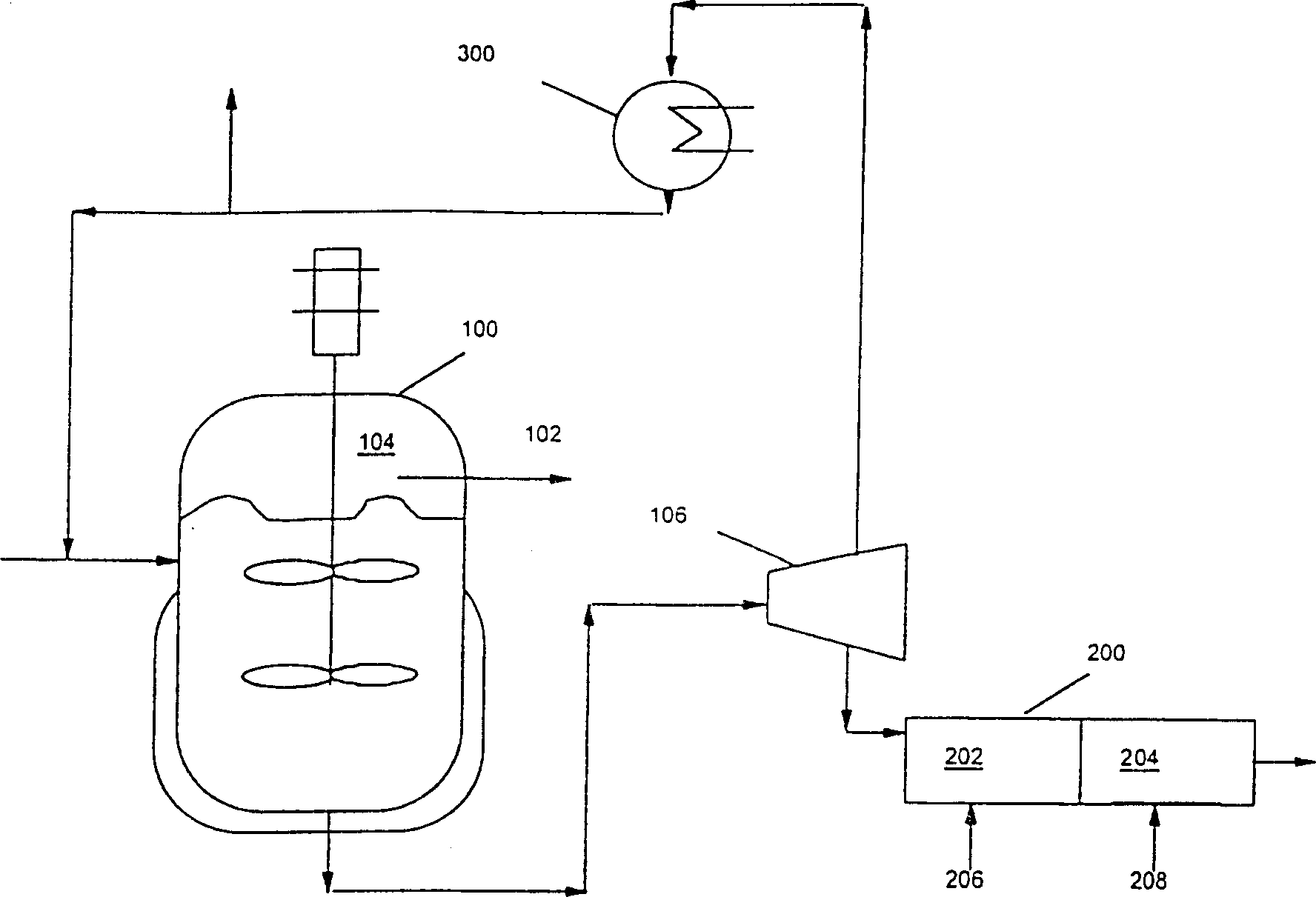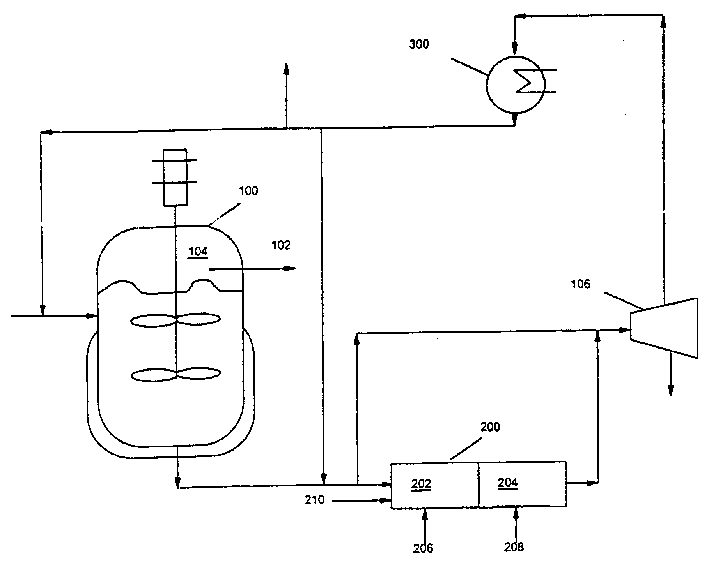Process for producing polymers by free radical polymerization and condensation reaction, and apparatus and products related thereto
A polymerization reactor, free radical technology, used in coatings and other directions, can solve problems such as expensive
- Summary
- Abstract
- Description
- Claims
- Application Information
AI Technical Summary
Problems solved by technology
Method used
Image
Examples
Embodiment 1
[0136] A reaction mixture of 5% styrene, 17.5% acrylic acid, 15% 2-ethylhexyl acrylate, 32.45% methyl methacrylate, 30% cyclohexanol and 0.05% di-tert-butyl peroxide was added continuously to the figure 1 In a similar reactor system as described in , the reactor system consisted of a 3-gallon CSTR (Continuous Stirred Tank Reactor) followed by a fixed volume tube reaction zone, each zone maintained at a constant temperature. The reaction zone liquid level and feed flow rates were adjusted to provide a residence time of 15 minutes in the main reactor. The residence time in the tube reaction zone was 30 minutes. The temperature of the main reactor was maintained at 204°C, while the temperature of the tube reaction zone was maintained at 204°C, 232°C or 246°C. The reaction product is continuously pumped to the devolatilization section from which polymer product is continuously collected and subsequently analyzed for average molecular weight (M w and M n ) and acid number, the l...
Embodiment 2
[0139] The procedure of Example 1 was repeated except that the reaction zone liquid level and feed flow rate were adjusted to provide a residence time of 30 minutes in the main reactor. The residence time in the tube reaction zone was 30 minutes. The temperature of the main reactor was maintained at 204°C, while the temperature of the tube reaction zone was maintained at 204°C or 232°C. The reaction product is continuously pumped to the devolatilization section from which polymer product is continuously collected and subsequently analyzed for average molecular weight (M w and M n ) and acid number, the latter indicating the amount of carboxyl functional groups present on the polymer chain. The results are shown in Table 2.
[0140] Tube reaction zone temperature (°C)
Embodiment 3
[0142] 5% styrene, 17.5% acrylic acid, 15% 2-ethylhexyl acrylate, 32.45% methyl methacrylate, approximately 30% cyclohexanol (see Table 3), 0.05% di-tert-butyl peroxide and varying Amount of esterification catalyst (p-toluenesulfonic acid) was added continuously to the reaction mixture with figure 1 In a similar reactor system as described in , the reactor system included a 3-gallon CSTR maintained at a constant temperature. The reaction zone liquid level and flow rate were adjusted to provide a residence time of 15 minutes in the reaction zone. The temperature of the reaction zone was maintained at 204°C. Three different amounts of p-toluenesulfonic acid were added to the reaction mixture in amounts corresponding to 0.0%, 0.1% and 0.2% by weight, respectively, of the reaction mixture. The reaction product is continuously pumped to the devolatilization section from which polymer product is continuously collected and subsequently analyzed for average molecular weight (M w an...
PUM
 Login to View More
Login to View More Abstract
Description
Claims
Application Information
 Login to View More
Login to View More - R&D Engineer
- R&D Manager
- IP Professional
- Industry Leading Data Capabilities
- Powerful AI technology
- Patent DNA Extraction
Browse by: Latest US Patents, China's latest patents, Technical Efficacy Thesaurus, Application Domain, Technology Topic, Popular Technical Reports.
© 2024 PatSnap. All rights reserved.Legal|Privacy policy|Modern Slavery Act Transparency Statement|Sitemap|About US| Contact US: help@patsnap.com










